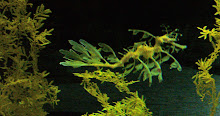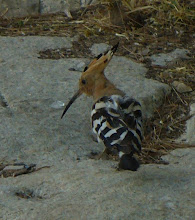One of the more interesting (and less depressing) stories to appear in the papers in recent weeks has been that of the ongoing battle between Felix Baumgartner and Michel Fournier to be the first supersonic man. More accurately, the two men are both attempting to break the sound barrier by riding to the upper stratosphere by helium balloon and jumping out. The full story can be found online on the website of The Guardian newspaper here- http://www.guardian.co.uk/science/2010/sep/05/felix-baumgartner-michel-fournier-supersonic
- a shorter version of the same tale appeared in the news synopsis magazine "The Week" (11th September edition). This week's issue of the same magazine (The Week)relates the discovery of the fossilised remains of a giant "Water King" penguin on the Southern Coast of Peru-
"Inkayacu paracasensis, which lived some 36 million years ago- stood around 5 feet tall and had striking red and brown plumage" The Week reports that the scientific team that made the discovery was led by Jakob Vinther of Yale University. The colour of the penguin's feathers was deduced from the size and shape of fossilized pigment-producing cells (melasomes), which were found to be similar to those producing redish brown or grey colouration in other (living) species of birds and unlike melasomes found in living penguin species.
The full reference for the scientific paper is-
J. A. Clarke, D. T. Ksepka, R. Salas-Gismondi, A. J. Altamirano, M. D. Shawkey, L. D’Alba, J. Vinther, T. J. DeVries, and P. Baby. 2010. Fossil evidence for evolution of the shape and color of penguin feathers. Science 330
and there is an abstract online [HERE]
This is not the first time the colour of a long extinct animal species has been deduced from a fossil. In fact, some years ago, my former PhD supervisor, Prof. Andrew Parker (now of the Natural History Museum in London)discovered evidence of colouration in three long-extinct species of fossilized seed shrimp. In that case, the colouration was caused not by a pigment, but by a light-reflecting structure on the animals' antennae. The tiny structure diffracted light -splitting any light falling on it into its constituent wavelengths (colours)and "scattering" the different coloured light in different dirrections. The result was that the antennae would have had bright, multi-coloured appearance - more details of that are online [HERE].
Today's final link is to this article on a career in making the transition from research science to science writing by Rosalind Pidcook-
http://sciencecareers.sciencemag.org/career_magazine/previous_issues/articles/2010_10_15/caredit.a1000101
this is a subject somewhat dear to my own heart (see "A week in the Life of a Wildlife writer"), since I have made the a similar career transition myself; my route was different from Rosalind Pidcook's, proving (if proof were needed) that there is more than one way to skin the proverbial cat....
Subscribe to:
Post Comments (Atom)









No comments:
Post a Comment